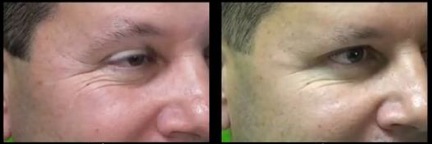Crow’s feet are the horizontal, branch-like lines that expand from the outer corners of the eyes. While they are reminiscent of frequent smiling, they are also one of the main signs of aging to most people. It is inevitable that we develop these lines as we get older; as we lose elasticity in our skin, these wrinkles begin to form and only deepen and lengthen with time. There are, however, some contributing environmental components that may cause them to develop prematurely and progress more rapidly.
Additional Causes of Crow’s Feet
In addition to the natural aging process of skin, the following factors can make wrinkles like crow’s feet appear worse.
- Prolonged sun exposure
- Frequent squinting
- Smoking cigarettes
These three additional causes are easy to prevent. Whenever in the sun, it is advised to wear sunscreen and to wear a hat. This will not only help prevent crow’s feet, but also other wrinkles, age spots, and skin cancer. UV rays are extremely harsh and do unnecessary damage to the skin. Another common side effect of sun exposure is squinting from the bright light. Wearing sunglasses will help stop you from squinting and also cover the sensitive skin around your eyes.
According to a Mayo Clinic response by Dr. Lowell Dale, MD, cigarette smoking causes accelerated aging. The cause is three-fold as follows:
- The nicotine in cigarettes reduces blood flow to the skin by constricting the blood vessels near the skin’s surface. This prevents oxygen and vital nutrients from getting to the skin.
- There are thousands of chemicals in cigarettes that damage the skin’s collagen and elastin. These two important types of fibers are what give skin its elasticity and youthful appearance.
- The repeated act of smoking causes physical damage because of the continual pursing of the lips to take a drag and the squinting of the eyes to keep the smoke out.
How to Do Away with Crow’s Feet Once They’ve Formed
There are a few options for getting rid of crow’s feet. They include surgical blepharoplasty, non-surgical blepharoplasty with Restylane or Belotero, and Botox injections. Surgical blepharoplasty is the only permanent option. However, the latter two are minimally invasive, cost effective, and require little risk. According to the American Society for Aesthetic Plastic Surgery (ASAPS), Botox injections have been a consistent leader among non-surgical cosmetic procedures since 2002.

